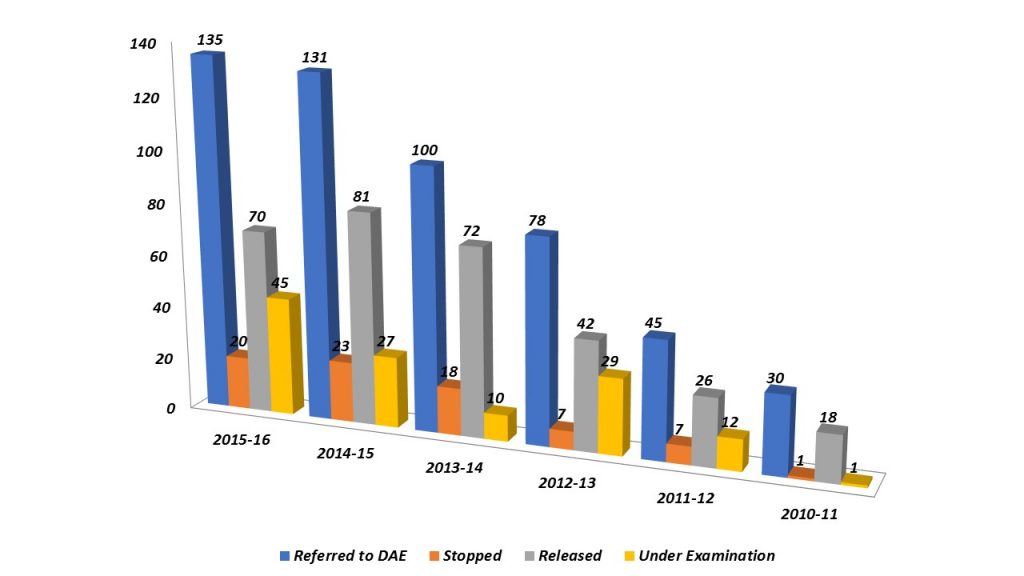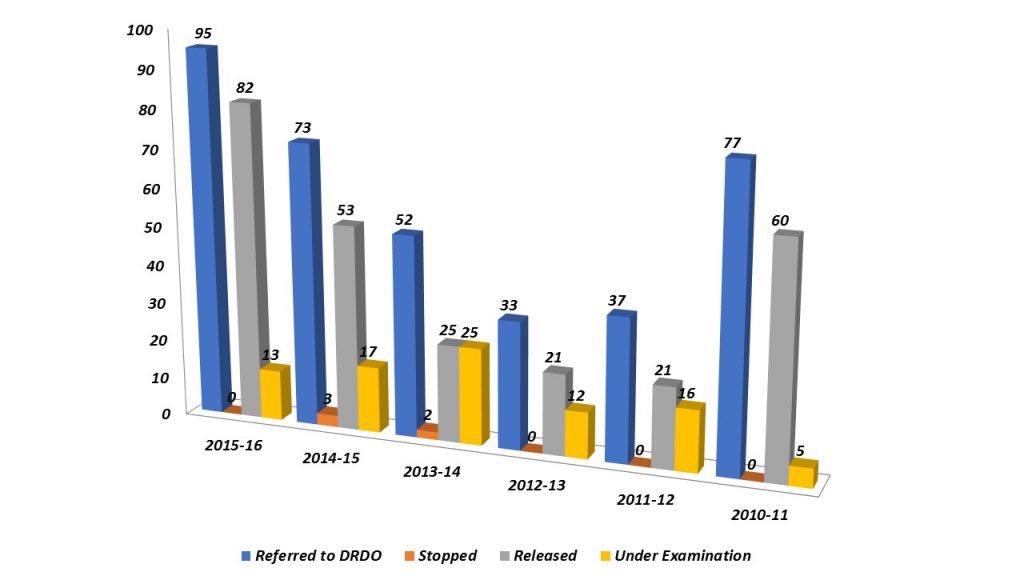Preliminaries
Hello readers. Hope you all are doing well in this difficult time due to the COVID-19 pandemic. Hopefully the present crisis will go away in some time but is this the last challenge to the mankind? Possibly not. Long before this pandemic we came to know about the potential threat of water scarcity, which is steadily growing towards a harsh reality. Ah! Water, the most precious yet abused substance on this planet.
Although scarcity of water is a serious threat to the mankind and worth discussing, this article intends to cover a related but slightly different aspect, i.e. drinking water. Today’s article intends to give an idea about what we should expect in our drinking water and why so. In later articles I will discuss about further related areas.
a Common misconception about water quality
Have you ever invited a technician to service your domestic water filter? Many of you would respond in the affirmative. Then you would have noticed him (or her, without a gender bias) taking out a small device, checking the water sample after servicing and nodding that everything is perfect. Some of us may be happy with that, after all that gentleman knows his trade. More curious ones may ask what it means and the technician would show the reading on the device. This is a Total Dissolved Salt (TDS) meter reading and a common misconception is that a low TDS reading makes the drinking water healthy. Well, it is a very simple way to judge the water quality but there are a lot beyond TDS, which all of us deserve to know. Let us explore further.
Water in human body
Among the remaining few things we still take for granted is water. Let us recall how important water is for our body to function. Water constitutes about 50-70% of human body by weight and performs many vital functions like to function as the solvent for biochemical reactions in cellular homeostasis, to sustain cardiovascular volume, to serve as the medium for heat and mass transport etc. [1]. Experimental data reported 68.75% water content in a typical human body, which includes 64.68%, 31.81%, 73.69%, 83.74% and 79.49% weight of skin, skeleton, heart, lungs and kidney respectively [2].
Food and drinking water intake maintains the correct water level in these organs and consequently their intended functions. How much water do we drink to maintain that balance? It varies from person to person and could be influenced by many factors but let us see what some of the reputed bodies recommend. The National Institute of Health of the United States of America (USA) recommends a daily intake of 2.7 and 3.7 litres for an adult female and male respectively [3], out of which about 81% is managed through various liquid intakes and the rest through food. The World Health Organization (WHO) recommends intakes of 2.2 and 2.9 litres per day for an adult female and male respectively, with about two-third of it is expected through various beverage intake [4].
essential nutrients in water
As seen in the previous section, water is the largest constituent of the human body and it also serves as a medium to transport various materials within the body. These materials include some of the dissolved essential micronutrients. Calcium, sodium, potassium, chlorine, magnesium, iron, zinc, chromium, copper, iodine, cobalt, molybdinum and selenium are regarded as essential for human health [4]. Another group of elements, i.e. fluorine, boron, manganese, nickel, silicon and vanadium may also be useful [4]. Drinking water is a source of some of these elements.
WHO estimates that water can contribute between 1 and 20% of the total dietary intake of selected trace elements and electrolytes [4]. While drinking water may provide up to 20% total daily intake for calcium and magnesium, for the majority of other elements it provides less than 5% of total intake [4]. WHO does not recommend any minimum level of these nutrients in water based on the assumption that the dietary sources are adequate to meet the needs [4].
However, it notes that dissolved minerals are indeed an important source of dietary sources are not adequate due to availability or food habits [4]. WHO concludes in favour of the hypothesis that consumption of hard water (high in calcium and magnesium) is associated with a somewhat lowered risk of cardiovascular disease, with magnesium being the more likely contributor to those benefits [4]. It also recommends stabilization of demineralized and corrosive drinking water with additives to increase or re-establish calcium and magnesium levels [4]. Remember the days when we used to drink less filtered water? That does not seem so bad, huh?
what if we filter our drinking water too much?
WHO has considered the effects of demineralized water in its studies. Such a study defines demineralized water as water almost or completely free of dissolved minerals as a result of distillation, deionization, membrane filtration (reverse osmosis or nanofiltration), electrodialysis or other technology [4].
It notes that TDS in this type of water can be as low as 1 mg/L and its possible adverse consequences can be:
- Direct effects on the intestinal mucous membrane, metabolism and mineral homeostasis or other body functions.
- Little or no intake of calcium and magnesium, and other essential nutrients.
- Loss of calcium, magnesium and other essential nutrients in prepared food.
- Increased chances of dietary intake of toxic metals through leaching from the distribution lines or storage.
- Poor taste and less thirst quench – not a direct health effect but may affect water intake or lead to the use of other sources of water that may not be healthy.
An earlier study, commissioned by WHO, concluded that completely demineralized water has adverse influence on animal and human organism [4]. The study, based on available health, organoleptic and other information recommended:
- A minimum level for dissolved salts (100 mg/L), bicarbonate ion (30 mg/L), and calcium (30 mg/L);
- An optimum level for total dissolved salts (250-500 mg/L for chloride-sulfate water and 250-500 mg/L for bicarbonate water);
- A maximum level for alkalinity (6.5 mEq/L), sodium (200 mg/L), boron (0.5 mg/L) and bromine (0.01 mg/L).
Going by the above data, the 50-ish mg/L (ppm) TDS content that our typical domestic RO based filters show, may not be the best for our health. On the other hand the treated municipality water supply may not be very bad in that aspect.
contaminants in drinking water
Due to various natural sources and human activities the number of water contaminants are vast but can be categorized into a few groups for simplicity. The Safe Drinking Water Act (of the USA) defines the term “contaminant” as meaning any physical, chemical, biological, or radiological substance in water [5]. The physical contaminants like sediment or organic material suspended in water affect physical appearance or other physical properties. Chemical contaminants are natural or man-made elements or compounds dissolved in water, like metals, salts, pesticides etc. The biological contaminants are living organisms like bacteria, viruses, parasites etc. The radiological contaminants are radioactive materials like uranium, caesium, radon etc.
Among all contaminants, WHO has identified faecal contamination (microorganisms), arsenic and fluoride as the highest priority parameters for global monitoring [6]. WHO has also defined guidelines for drinking water quality and in doing so has identified an exhaustive number of contaminants and set their limits [7]. The USA EPA drinking water treatability database also contains vast details on water contaminants [8]. Some of the key water contaminants responsible for large scale health effects are briefly described below. Most of these are either identified by WHO as key contaminants for water quality guidelines or fall under the bracket of the top ten chemicals of major public health concern.
Please feel free to skip this section, if the information appears too much and straight jump to Table 2 for a summarized version of the acceptable limits of the contaminants.
Arsenic
Arsenic is a naturally occurring chemical contaminant. Rocks, soil and natural habitat are contributors to arsenic contamination in water. In water this metalloid is present in two forms, i.e. arsenide (oxidation state +3, also known as As(3) or As(III)) and arsenate (oxidation state +5, also known as As(5) or As(V)) [7][8]. As(3) usually dominates in ground water, whereas As(5) dominates in surface water due to oxidation of As(3) [7][8]. Inorganic form of arsenic is more common in water than its organic forms [8].
Arsenic is not known to be essential for human health [8]. The adverse health impacts can be acute or chronic, depending on the concentration and duration of exposure. Acute arsenic intoxication is possible with very high concentration in water [7]. Chronic arsenicism may lead to cancer of bladder, lungs, skin, kidney, liver and prostate or non-carcinogenic cardiovascular, pulmonary, neurological and endocrine diseases [7][8]. Dermal lesions, after a minimum exposure for approximately 5 years, have been reported as the most commonly observed symptom [8]. WHO has noted the effects on the cardiovascular system in children consuming arsenic-contaminated water (mean concentration 0.6 mg/L) for an average of 7 years [7].
Fluoride
Fluorine, a common element, is widely distributed in Earth’s crust and exists in the form of fluorides in a number of minerals and in almost all vegetation [7]. Fluoride in surface waters can be due to deposition of particles in the atmosphere and weathering of fluoride containing rocks and soils. Fluoride in ground water occurs from leaching from rock formations [8] and is often in higher concentration than in surface water [8]. Human activities such as chemical manufacturing plants and production of fluoridated chemicals also introduce fluoride in water [8].
Low level of fluoride intake aids in dental and skeletal health, usually in the range of 0.7 to 1.2 mg/L [8]. To produce signs of acute fluoride intoxication, minimum oral doses of about 1 mg of fluoride per kilogram of body weight are required [8]. Epidemiological studies of possible adverse effects of the long-term ingestion of fluoride via drinking water establish that high fluoride intakes primarily produce effects on skeletal tissues (bones and teeth). Adverse effect on tooth enamel leading to mild dental fluorosis may happen at concentrations between 0.9 and 1.2 mg/L [7]. Elevated fluoride intakes can have more serious effects on skeletal tissues. Skeletal fluorosis (with adverse changes in bone structure) may be observed when drinking water contains 3 – 6 mg of fluoride per litre [7]. Crippling skeletal fluorosis usually develops only where drinking-water contains over 10 mg of fluoride per litre. Association between fluoride in drinking-water and cancer is inconclusive due to lack of relevant data related to bone cancer [7].
Microbes
Most waterborne pathogens are introduced into drinking water through human or animal faeces [7]. Infectious diseases caused by pathogenic bacteria, viruses and parasites (e.g. protozoa and helminths) are the most common and widespread health risk associated with drinking water [7]. Pathogens transmitted through contaminated drinking water may lead to severe and even life-threatening diseases. Examples include typhoid, cholera, infectious hepatitis (caused by hepatitis A or hepatitis E virus) etc. Less severe outcomes may be self-limiting diarrhoeal disease (e.g. noroviruses, Cryptosporidium). The concept of using organisms such as E. coli as indicators of faecal pollution is a well-established practice in the assessment of drinking water quality [7].
Other Contaminants
Some other significant contaminants are tabulated in Table 1.
| Contaminants | Sources to Water [7][8] | Effects on Health and Utilities [7][8] |
| Nitrates | > Natural nitrogen cycle > Organic nitrates – human sewage and livestock manure > Inorganic nitrates – fertilizers containing potassium nitrate and ammonium nitrate compounds | > Excessive levels can cause serious illness and possibly death, with infants and children are at greater risk > Methemoglobinemia (blue baby syndrome), results in decreased oxygen carrying capacity, shortness of breath and even coma and death |
| Lead | > Household plumbing systems containing Lead in pipes, solder or fittings service connections to homes | > Various neurodevelopmental effects > Mortality (mainly due to cardiovascular diseases) > Impaired renal function > Hypertension > Impaired fertility > Adverse pregnancy outcomes |
| Mercury | > Natural sources > Up to two third of mercury is from human activities > 80% of human related sources are from fossil fuel combustion, mining, smelting > 15% from fertilizers, fungicides, municipal solid wastes > 5% from industrial waste | > Permanent damage to the brain, kidneys, and nervous system > Organic mercury compounds are more dangerous because they get adsorbed into the body much more readily than elemental or inorganic mercury > Mercury poisoning in children or a developing faetus are more extreme; often affecting brain and nervous system development |
| Chlorine | Disinfectant residue in treated water | > Effective disinfectant against pathogens > May cause asthma, dermatitis, cancer [9] > Unacceptable taste (threshold 5 mg/L), odour (threshold 2 mg/L) [9] > Most individuals are able to taste or smell chlorine at concentrations well below 5 mg/L, and some at levels as low as 0.3 mg/L |
| Uranium | > Leaching from natural deposits (granites and other mineral deposits) > Release in mill tailings > Emissions from the nuclear industry > Combustion of coal and other fuels use of phosphate fertilizers containing uranium | > Nephritis > Radiotoxicity |
| Pesticides | > Pesticides used for disease vector controls | > Toxicity > Affects nervous system, liver > Some are carcinogenic, e.g. alachlor |
| Pharmaceuticals | > Discharges from poorly controlled manufacturing facilities > Sewage water contaminated by excretion from individuals using these chemicals > Uncontrolled drug disposal (e.g. discarding drugs into toilets) > Agricultural runoff from livestock manure | > Chemicals of emerging concern > Concentration is typically lower than the lowest therapeutic doses. Therefore, exposure to individual compounds in drinking-water is unlikely to have appreciable adverse impacts on human health. This may be a challenge in countries where awareness is minimal. > Excess concentration may cause adverse side-effects, immunity to anti-biotics |
| Volatile Organic Compounds (VOC) | > Trihalomethanes (THM) like chloroform, bromoform due to chlorination of water > Benzene, toluene, ethylbenzene and xylenes (BTEX) through petroleum oils > Industrial effluents atmospheric pollution, including vehicular emissions | > Benzene is carcinogenic, can also affect nervous system > Unpleasant odour and taste > Chloroform is possibly carcinogenic, also affects centrilobular region of liver |
| Selenium | > Naturally occurring, often in association with sulphur-containing minerals | > Essential trace element for health > High levels may cause gastrointestinal disturbances, discoloration of the skin, decayed teeth, hair or nail loss, nail abnormalities and changes in peripheral nerves > Toxicity directly attributable to a water source is rare but not absent > Usually not a concern even in selenium rich geographical areas |
| Iron | > Natural sources > Use of iron coagulants corrosion of steel and cast iron pipes during water distribution | > Essential element in human nutrition, particularly in the Iron(II) oxidation state > Unacceptable turbidity, colour, stains or taste (at higher concentration) > Up to 2 mg/L no health hazard of excess Iron storage in the body > Excess Iron can affect gut bacteria, cause inflammation of intestine [10] > Excess iron may affect growth in infants and faetal development [10] |
| Manganese | > Primarily natural sources | > Essential element > Unacceptable taste, stains at levels exceeding 0.1 mg/L > Unacceptability threshold is lower than the health based limit of 0.4 mg/L |
| TDS | > Natural sources > Sewage > Urban runoff > Industrial waste water | > Salty, bitter taste > Less thirst quenching > Increasingly unpalatable at concentration greater than 1000 mg/L > Scaling |
acceptable water contaminant limits
WHO has defined the guidelines for acceptable limits of the water contaminants [7]. Countries worldwide define their own limits following these guidelines or through their studies to suit the country specific requirements. The USA and European Union (EU) have defined their limits through regulations, i.e. National Primary Drinking Water Regulations [11] and Council Directive 98/83/EC [12] respectively. India has adopted its own standard – Drinking Water Specification IS 10500:2012 [13] – through the Bureau of Indian Standards (BIS) based on the WHO guidelines, USA regulation, EU regulation and its own Manuals of Water Supply and Treatment. Table 2 below compares these standard for some of the major physical, chemical, microbial and radiological contaminants / parameters.
| Contaminant / Physical Parameter | Max Acceptable Limits (WHO) [7] | Max Acceptable Limits (India) [13] | Max Acceptable Limits (USA) [11] | Max Acceptable Limits (EU) [12] |
| Arsenic | 0.01 mg/L (10 ppb) | 0.01 mg/L (10 ppb) | 0.01 mg/L (10 ppb) | 0.01 mg/L (10 ppb) |
| Fluoride | 1.5 mg/L (1.5 ppm) | 1 mg/L (1 ppm) | 4 mg/L (4 ppm) | 1.5 mg/L (1.5 ppm) |
| Microbes (E. coli) | 0 | 0 | 0 | 0 |
| Nitrates | 50 mg/L (50 ppm) | 45 mg/L (45 ppm) | 10 mg/L (10 ppm) | 50 mg/L (50 ppm) |
| Lead | 0.01 mg/L (10 ppb) | 0.01 mg/L (10 ppb) | 0 | 0.01 mg/L (10 ppb) |
| Mercury | 0.006 mg/L (6 ppb) | 0.001 mg/L (1 ppb) | 0.002 mg/L (2 ppb) | 0.001 mg/L (1 ppb) |
| Chlorine (free) | 5 mg/L (min 0.2 mg/L at the point of delivery) | Min 0.2 mg/L Max limit not set | 4 mg/L (4 ppm) | None set for free Chlorine |
| Uranium | 0.03 mg/L (30 ppb) | Limit for radioactivity: Alpha emitters – 0.1 Bq/L Beta emitters – 1.0 Bq/L | 0 | Limit for radioactivity: Total indicative dose 0.1 mSv/year |
| Benzene | 0.01 mg/L (10 ppb) | None set | 0 | 0.001 mg/L (1 ppb) |
| THM | Bromodichloro-methane – 0.06 mg/L ; Bromoform – 0.1 mg/L; Dibromo-chloromethane – 0.1 mg/L; Chloroform – 0.3 mg/L | Bromodichloro-methane – 0.06 mg/L ; Bromoform – 0.1 mg/L; Dibromo-chloromethane – 0.1 mg/L; Chloroform – 0.2 mg/L | Bromodichloro-methane – 0; Bromoform – 0; Dibromo-chloromethane – 0.06 mg/L; Chloroform – 0.07 mg/L | Total THM 0.15 mg/L |
| Pesticides (Alachlor, as a representative) | 0.02 mg/L (20 ppb) | 0.02 mg/L (20 ppb) | 0.002 mg/L (2 ppb) | Individual pesticide – 0.1 ppb, Total pesticides – 0.5 ppb |
| Selenium | 0.04 mg/L (40 ppb) | 0.01 mg/L (10 ppb) | 0.05 mg/L (50 ppb) | 0.01 mg/L (10 ppb) |
| Iron | None set | 0.3 mg/L (0.3 ppm) | None set | 0.2 mg/L (0.2 ppm) |
| Manganese | None set | 0.1 mg/L (100 ppb) | None set | 0.05 mg/L (50 ppb) |
| pH | 6.5 – 8.5 | 6.5 – 8.5 | None set | 6.5 – 9.5 |
| TDS | None set | 500 mg/L (500 ppm) | None set | None set |
| Turbidity | 1 NTU | 1 NTU | 1 NTU | As acceptable to consumers and no abnormal change |
Summary
Drinking water undoubtedly deserves awareness as its right quality and quantity is a must for our body to function properly. Today the water sources are contaminated with wide range of contaminants. Therefore, not only the commonly followed TDS, there are many other water contaminants that we should be aware of. This article has made an attempt to cover the basics of acceptable drinking water qualities based on authentic global data.
References
- Present Knowledge in Nutrition, 10th Edition, Edited by John W. Erdman Jr., Ian A. Macdonald, Steven H. Zeisel, Wiley-Blackwell Publication, ISBN 978-0-470-95917-6.
- The Chemical Composition of the Adult Human Body and Its Bearing on the Biochemistry of Growth, H. H. Mitchell, T. S. Hamilton, F. R. Steggerda, H. W. Bean, Journal of Biological Chemistry, Vol. 158, pp 625-637.
- Dietary Reference Intakes for Water, Potassium, Sodium, Chloride and Sulphates, Institute of Medicine of the National Academics, The National Academic Press, ISBN 0-309-53049-0, 2004.
- Nutrients in Drinking Water, World Health Organization, 2005, ISBN 92 4 159398 9.
- Types of Drinking Water Contaminants, United States Environmental Protection Agency, https://www.epa.gov/ccl/types-drinking-water-contaminants
- Progress on drinking water, sanitation and hygiene: 2017 update and SDG baselines, Geneva: World Health Organization (WHO) and the United Nations Children’s Fund (UNICEF), 2017. Licence: CC BY-NC-SA 3.0 IGO. ISBN 978-92-4-151289-3.
- Guidelines for drinking-water quality: fourth edition incorporating the first addendum. Geneva: World Health Organization; 2017. Licence: CC BY-NC-SA 3.0 IGO. ISBN 978-92-4-154995-0.
- Drinking Water Treatability Database, United States Environmental Protection Agency, https://tdb.epa.gov/tdb/findcontaminant
- Chlorine in Drinking-water, Background document for development of WHO Guidelines for Drinking-water Quality, WHO/SDE/WSH/03.04/45
- Summary on Adverse Effects of Excess Iron, Prashanth Thankachan, Anura Kurpad, Indian Journal of Community Health / Vol 30 / Supp Issue / Apr 2018
- National Primary Drinking Water Regulations, United States Environmental Protection Agency, https://www.epa.gov/ground-water-and-drinking-water/national-primary-drinking-water-regulations#one
- Council Directive 98/83/EC of 3 November 1998 on the quality of water intended for human consumption. European Union.
- Drinking Water – Specification (second revision), Indian Standard, IS 10500:2012, May 2012





